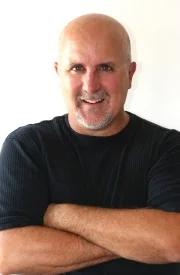Interview with US playwright Willy Conley
Write Local. Play Global. is delighted that playwright Willy Conley was able to take some time away from his playwriting, as well as his teaching at Gallaudet University (the world's only liberal arts school for Deaf and hard of hearing students) to answer a few questions about his work.
WLPG: Was there something in particular that motivated you to start writing for young audiences?
WILLY: I believe the seeds of my motivation to write spawned from my first professional job in the theatre as an actor with a touring educational outreach theatre troupe called “Sunshine Too!". This group was formed by the performing arts department of the National Technical Institute for the Deaf at R.I.T. in Rochester, NY. We were a company of three Deaf and three hearing actors who did it all – write, act, direct, design, build, set up, strike, launder, and drive. Under the brilliant guidance of renowned clown-mime-theatre artist Doug Berky, an ensemble member, we created “Arlecchino’s Dream" a commedia del arte piece. It was done in American Sign Language and spoken English, and turned out to be a hit with young Deaf and hearing audiences nationwide. Having been inspired by this experience, I began writing seriously in journals in the van, in restaurants, and motels.
WLPG: Why is it important to write for children and young people?
WILLY: If we don’t write for them, then we may lose future generations of people coming to the theatre. Children and young people would have fewer opportunities to develop their imagination, creativity, and cognitive skills, which could result in producing – at the very extreme – dystopian societies.
WLPG: What is your typical writing process?
WILLY: I don’t believe I have a typical process. Every play that I have written has had its own unique development path. For example, one play was inspired by a few folktales from India with the stories adapted separately and later merged; another one was from a love of drums and written in snippets of poems and movements; and yet another was created using a video camera as a writing tool and improvisations with an ensemble of actors. The only things that may be typical about my process are: 1) Every piece begins with handwriting; 2) the piece gets typed into a word processor on the computer; 3) and then the piece goes through a vigorous revision process.
WLPG: Is there something about Deaf playwriting for children and young people that is notable?
WILLY: Yes, but for me, it is more about writing for Deaf and hearing audiences of all levels. The key distinction is in writing for the eye rather than the ear. Deaf people by nature are very visual people. They process information from the world mostly through their eyes. I am always thinking about what I can do to maximize the use of that huge empty space on stage with my characters and their journeys. Also, I look for double-entendres that I can play with in ASL and English so that both audiences get them. A small example – a Deaf character in one of my plays adores Shakespeare, whose name literally in sign language is: SHAKE – SPEAR. The character has a canvas painting of his idol rolled up on a long stick, which he proudly struts around with. Another character asks him why Shakespeare was signed in that particular way. Exasperated by a seemingly stupid question, he demonstrates by holding up the stick like a spear and chucking it across the stage. Immediately afterwards he realizes that he had just thrown a painting of his idol.
WLPG: And, in the hopes of provoking some discussion: What question would you like to ask your fellow playwrights making plays for young audiences?
WILLY: We need more Deaf characters/plays in the theatre, thus producing more opportunities for Deaf theatre artists and audiences. Would you consider including this in your future writing, and perhaps collaborating with a Deaf writer or Deaf culture consultant (i.e. – a “native informant")?
WLPG: We welcome your responses - just click on 'post a comment' below.

